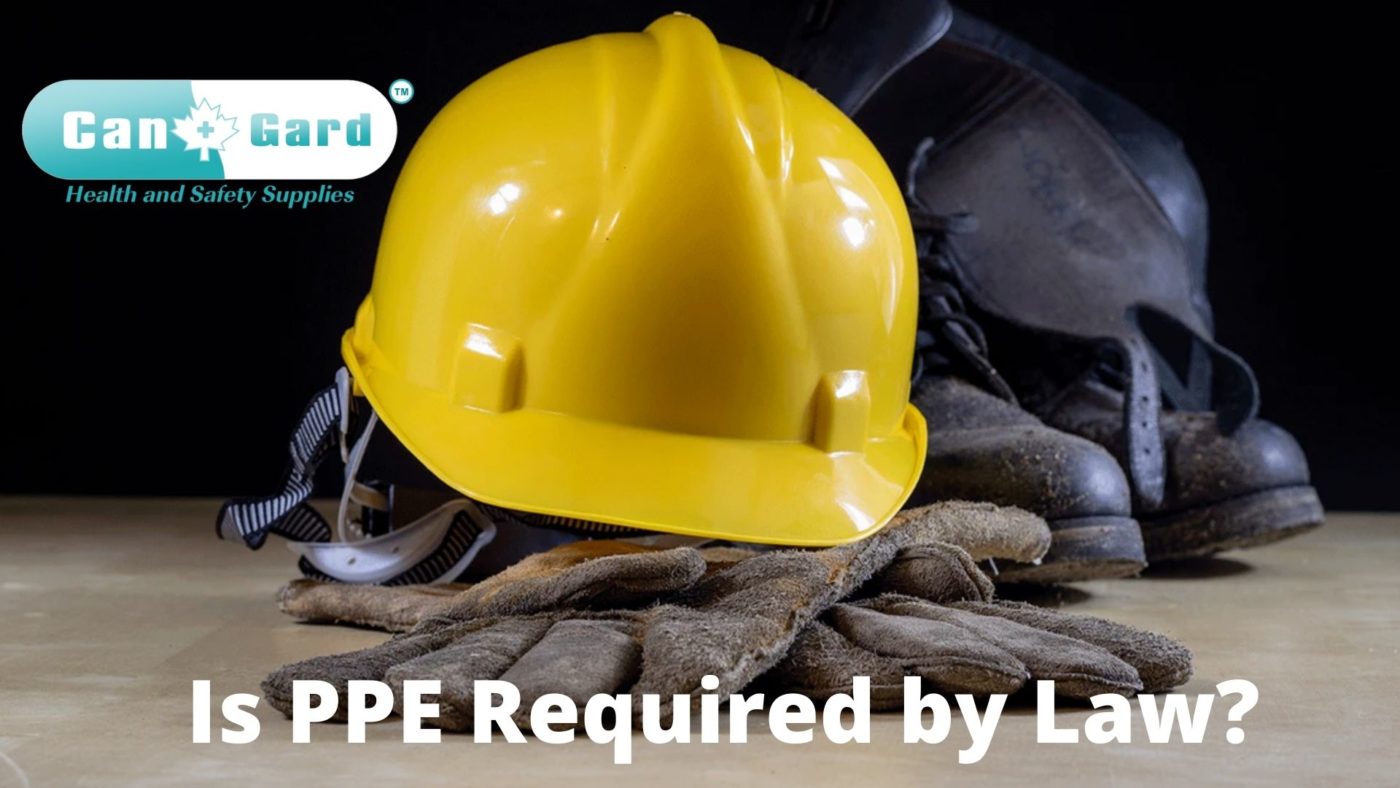First Aid/PPE
Is PPE Required by Law?
Many people wonder if Personal Protective Equipment (PPE) is required by law, and the answer is yes. It’s important to note that not all PPE is mandatory in every situation – it varies depending on the workplace and job requirements. For example, some employees need eye protection while others do not. In this blog post, we will discuss what types of PPE are mandatory in various workplaces, so you can make an informed decision about which types of equipment you should use for your work environment.
Some of the PPE required by law are work boots, hard hats, gloves, coveralls (or other high-visibility clothing), protective eyewear, and hearing protection. In some instances, workers may have to wear a respirator or face shield to comply with safety standards. The type of equipment varies depending on the location. For example, if you’re working near chemicals such as paint thinner or cleaning agents that emit toxic fumes, you recommend using respiratory protection.
Do you have to wear PPE by law?
Under the Personal Protective Equipment regulation, there are three instances where you have to wear PPE by law:
– When the workplace has a health and safety risk rating of “high” or greater.
– If an employer is required by law to provide their employees with personal protective equipment because it’s necessary for occupational purposes like protection from infectious substances on the clothing (employer must buy)
– When using hazardous chemicals that may present a hazard if they come into contact with skin
When wearing PPE in these cases, make sure you’re complying with all regulations concerning your type of workwear – this includes things such as puncture resistance and hygiene factors.
##Is PPE required by law when working with chemicals?
By law, you are required to wear PPE when working with hazardous chemicals. The employer is responsible for buying and providing it, making sure they’re following the law before taking matters into your own hands!
Why is PPE mandatory?
Employers have duties under the Health and Safety at Work legislation (HASAW) to keep their employees safe. This includes providing PPE such as gloves, eye protection, earplugs, or any other type of equipment that can prevent injury in case it’s needed.
Employers also have duties under HASAW to provide information about hazards in the workplace and how they should be dealt with – this could include wearing protective clothing like safety footwear, personal body protection, etc. The employer must make sure all necessary information is given to everyone using hazardous substances on occupational premises. If you’re not sure whether you need PPE for your work environment, ask your employer!
As well as employers having a duty of care towards employees’ health and safety through implementing the correct PPE. There are also many regulations in place to protect workers from injury.
-The Control of Substances Hazardous to Health Regulations (COSHH)
-Personal Protective Equipment at Work Regulations 1998 (PPE Regulation)
-Health and Safety at Work Act 1974 (HASAW) – general duty on employers not to expose their employees unnecessarily to risks arising out with the work they’re doing or by things which arise out of it like clothing worn for protection against danger, etc.
-Environmental Protection Act 1990 – this states that people who have control over premises must take reasonable steps not to create a danger, including preventing harm caused by exposure to hazardous substances such as asbestos dust; noise is another example.
All these are the laws that address the use of protective equipment.
Consequences of Not Wearing PPE
Here are some consequences of not wearing PPE:
– Infection can occur if the skin is exposed to hazardous material.
– In cold environments, frostbite and hypothermia are risks for the person who isn’t wearing PPE because they’ll lose body heat faster than someone else dressed more appropriately.
– Warning signs include muscle cramps, heavy perspiration, or shivering with little movement (due to lack of circulation). If these things happen, then your body may be in a dangerously low state of temperature, and you should seek medical attention immediately.
In conclusion, people must know about what type of dangers exist when going into various types of workplaces without protective equipment like gloves and masks to make educated decisions on how much risk they want to take on.
Refusal for Religious or Medical Reasons
– Some people refuse PPE for religious reasons.
– Others may have a medical condition that prohibits them from using certain types of PPE, like masks or gloves.
Refusal Complications: Hypothermia is a risk for the person who isn’t wearing PPE because they’ll lose body heat faster than someone else who’s dressed more appropriately. Warning signs include muscle cramps, heavy perspiration, or shivering with little movement (due to lack of circulation). If these things happen, then your body may be in a dangerously low state of temperature, and you should seek medical attention immediately.
How to Get Employees to Use PPE?
To convince employees to use PPE, managers can provide information on the risks of not wearing it. This includes the long-term health effects of breathing hazardous substances and coming into contact with them (e.g., skin reactions).
Managers should also emphasize how vital PPE is for protecting themselves from bodily harm during a disaster or emergency.
Safety in Numbers: When many people are present, there’s sometimes an assumption by some employees that someone else will take care of safety issues — but this isn’t always true when everyone is distracted because they’re trying to survive or do their job at hand.

